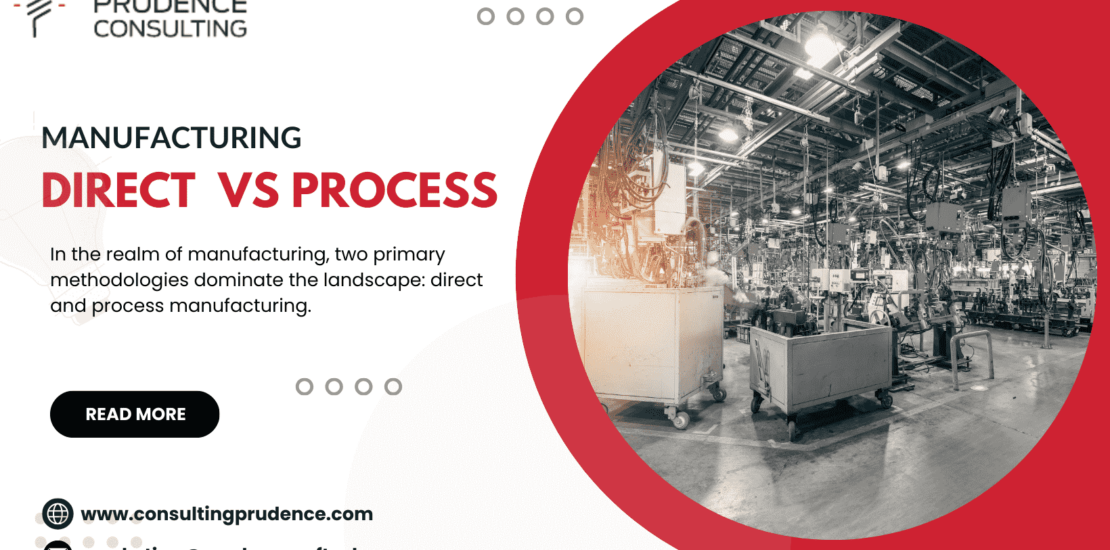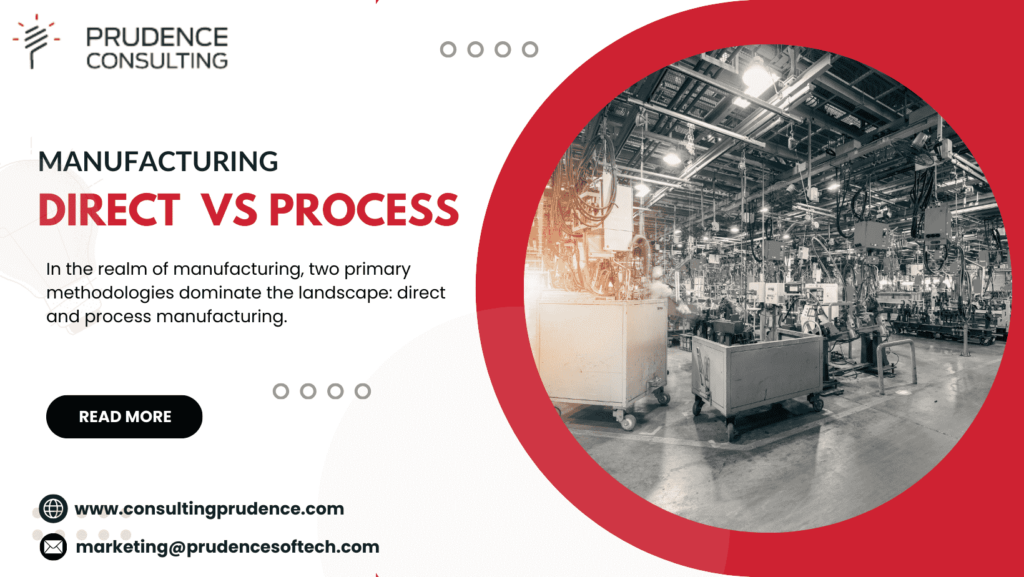Direct Vs Process Manufacturing
-
December 5, 2023
- Posted by: piyush.gupta@prudencesoftech.in
- Category: Manufacturing Business
No Comments

- December 5, 2023
- Posted by: piyush.gupta@prudencesoftech.in
- Category: Manufacturing Business


In the realm of manufacturing, two primary methodologies dominate the landscape: direct and process manufacturing. Both approaches have distinct characteristics, applications, and advantages, playing pivotal roles across industries worldwide. Understanding the nuances and differences between these methodologies is crucial for businesses aiming to optimize their production processes. Let’s delve into the intricacies of direct and process manufacturing to comprehend their significance in modern industrial operations.
Direct Manufacturing
Direct manufacturing, often known as discrete manufacturing, involves the production of distinct items such as machinery parts, automobiles, electronics, and more. This method is highly customizable and ideal for creating unique, identifiable products. The process is generally linear and follows a specific sequence of steps, with the final output being a tangible and individualized item.
Also Read : ERP for dairy milk product manufacturing
Key Characteristics:
- Distinct Units: Each product manufactured through this method is unique and can often be customized to meet specific customer requirements.
- Bill of Materials (BOM): It relies heavily on a detailed bill of materials, specifying the components and their quantities required for assembly.
- Assembly Line Production: Utilizes assembly lines or cells where individual parts are assembled to create the final product.
- Controlled Production: Manufacturers have precise control over the production process, allowing for quick changes and adjustments.
Industries Utilizing Direct Manufacturing:
- Automotive
- Electronics
- Aerospace
- Consumer goods
Process Manufacturing
Process manufacturing involves the production of goods through a continuous or batch-oriented process, often seen in industries like chemicals, food and beverage, pharmaceuticals, and more. Unlike direct manufacturing, process manufacturing deals with liquids, powders, or gases that undergo transformation through mixing, reacting, or blending to create the final product.
Key Characteristics:
- Continuous or Batch Processing: Products are produced continuously or in batches, with each batch typically following the same recipe or formula.
- Homogeneous Output: The final products are often standardized and identical within a batch, maintaining consistency.
- Use of Chemical Reactions or Formulation: Involves chemical processes, mixing ingredients, or formulations to create the product.
- Inventory Management: Requires complex inventory management due to handling bulk materials and intermediate stages of production.
Industries Utilizing Direct Manufacturing:
- Pharmaceuticals
- Food and Beverage
- Chemicals
- Cosmetics
Conslusion
Both direct and process manufacturing methodologies play pivotal roles in the industrial landscape, each catering to different production requirements and industries. While direct manufacturing emphasizes customization, flexibility, and individualized products, process manufacturing thrives on consistency, scale, and standardized production processes.
Also Read : ERP for Dairy and livestock Management


